Consignment Agreement Samples
-
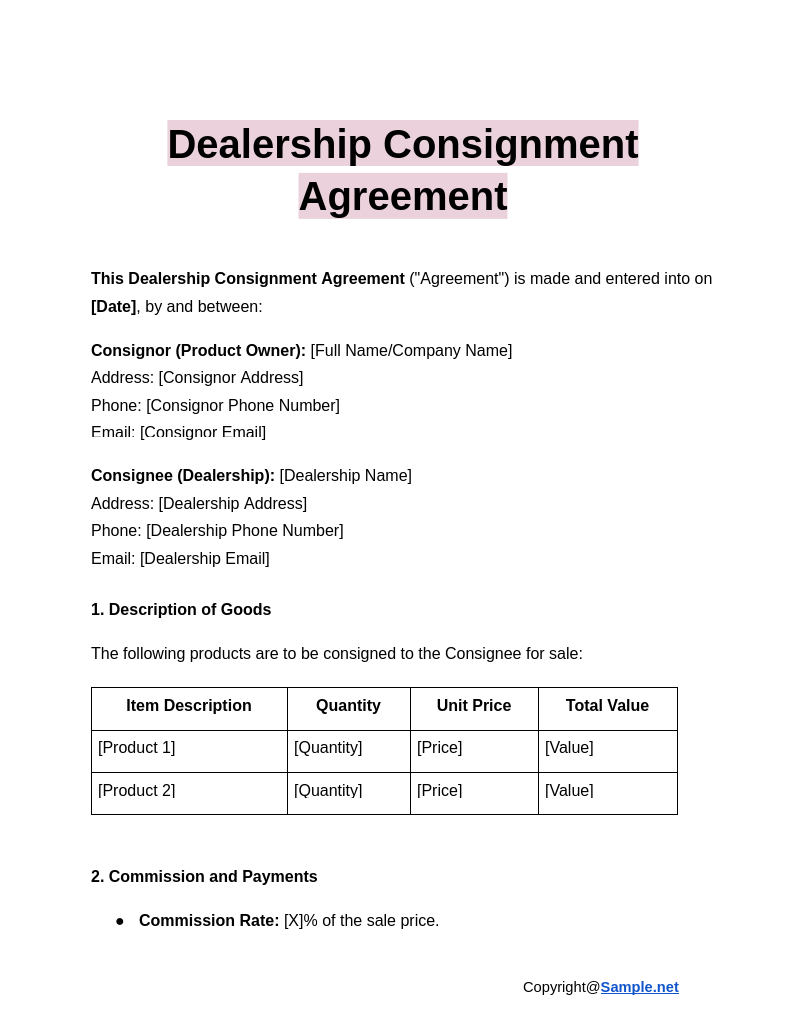
Dealership Consignment Agreement
download now -
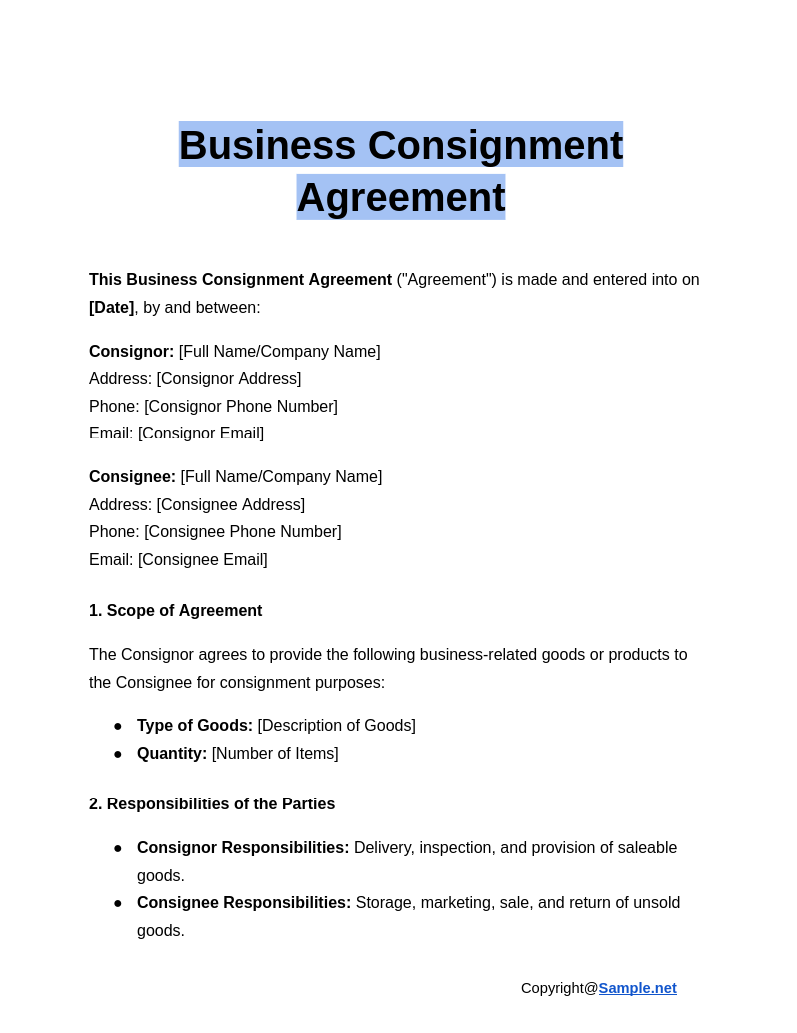
Business Consignment Agreement
download now -
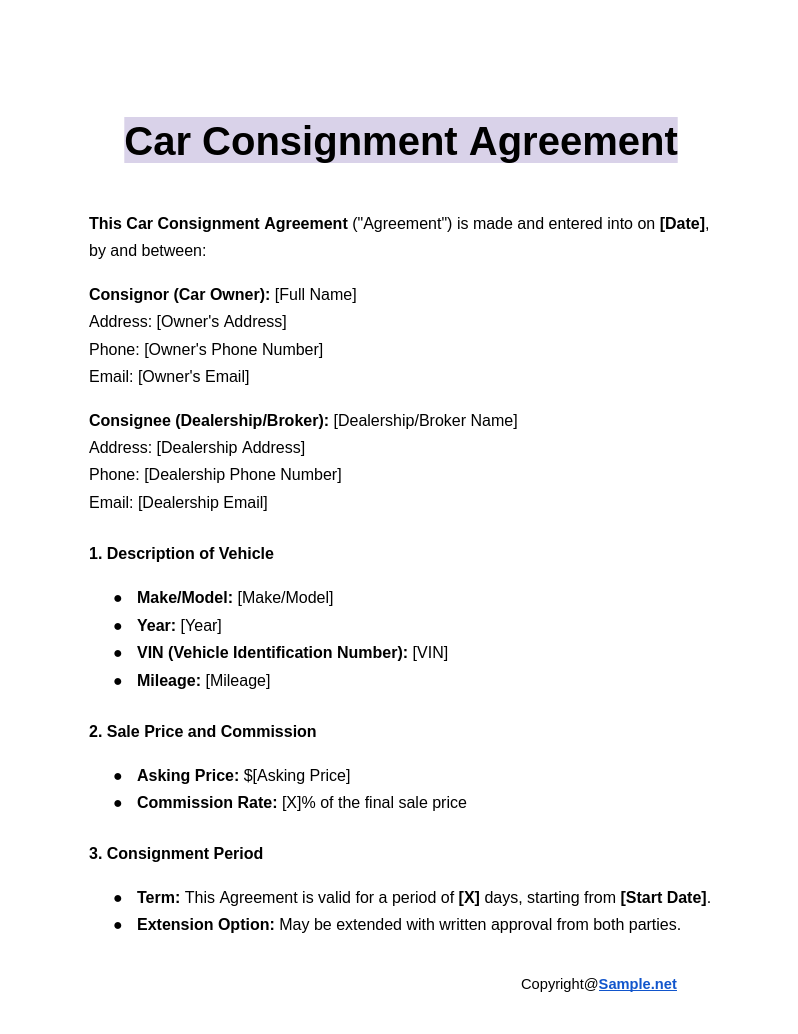
Car Consignment Agreement
download now -
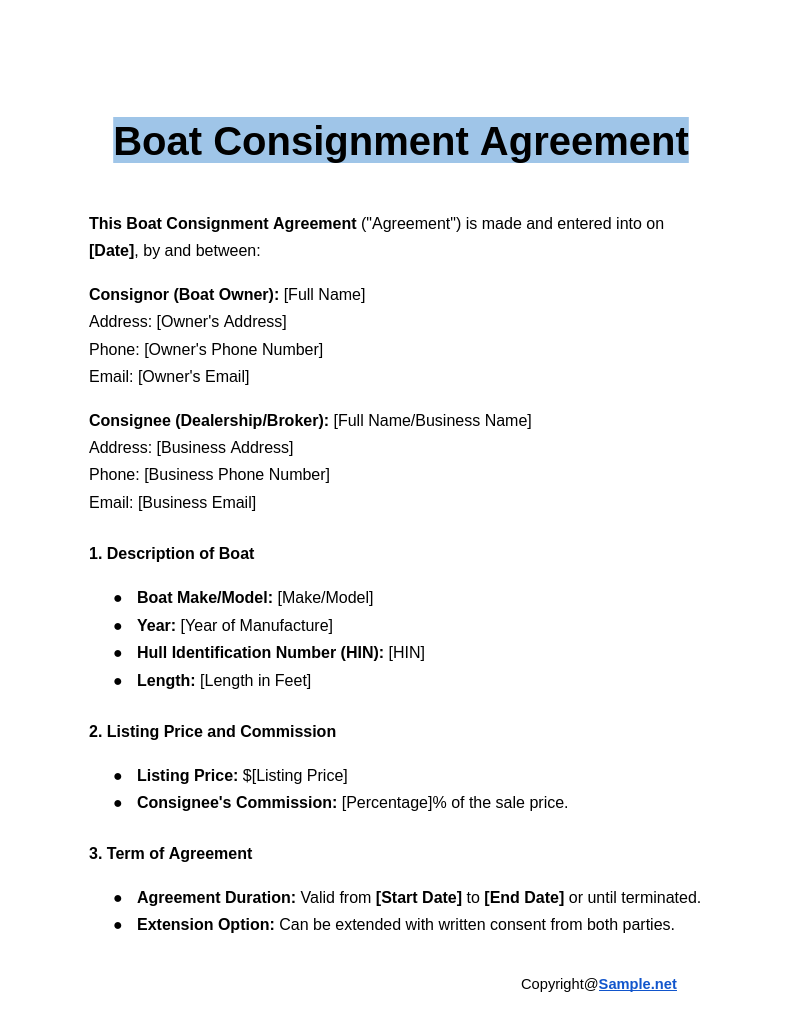
Boat Consignment Agreement
download now -
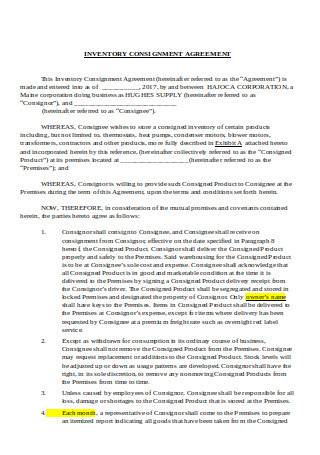
Inventory Consignment Agreement
download now -
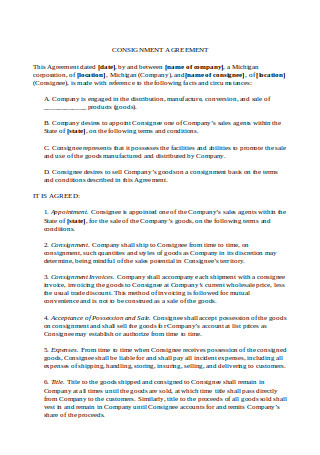
Consignment Agreement
download now -
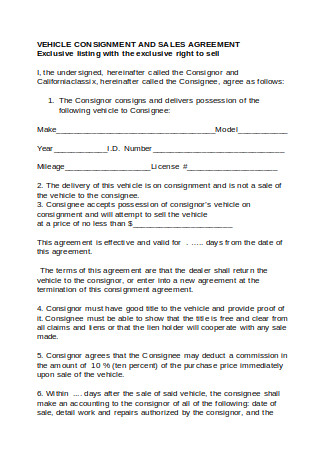
Vehicle Consignment and Sales Agreement
download now -

Printable Consignment Agreement
download now -
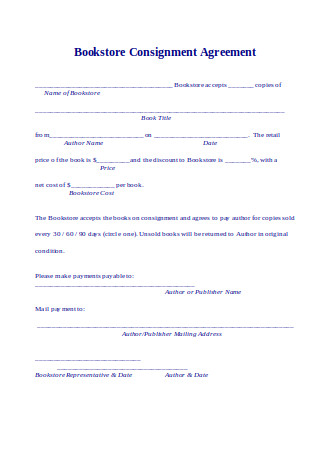
Bookstore Consignment Agreement
download now -
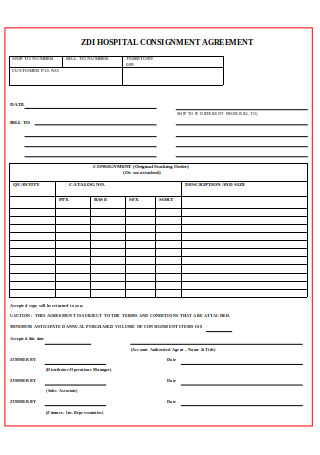
Hospital Consignment Agreement
download now -

Consignment Stock Agreement
download now -
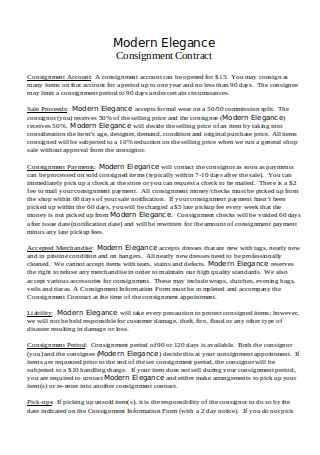
Consignment Contract
download now -
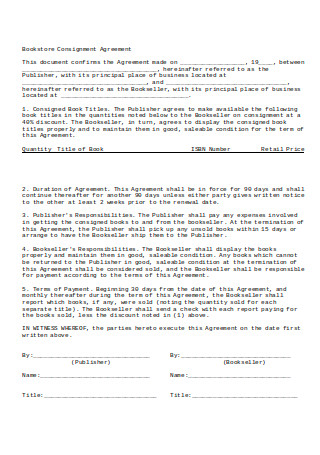
Sample Bookstore Consignment Agreement
download now -
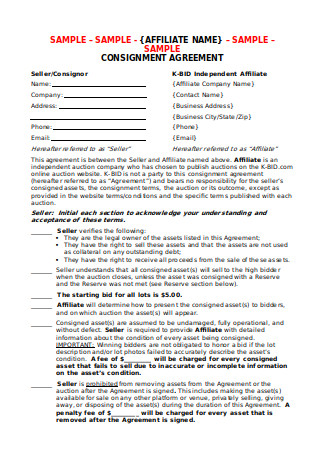
Sample Consignment Agreement
download now -
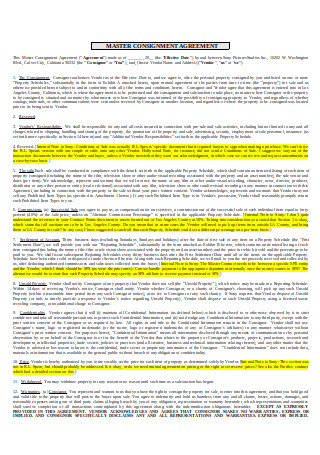
Consignment Master Agreement
download now -
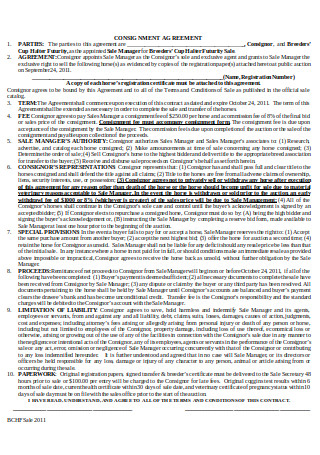
Basic Consignment Agreement
download now -
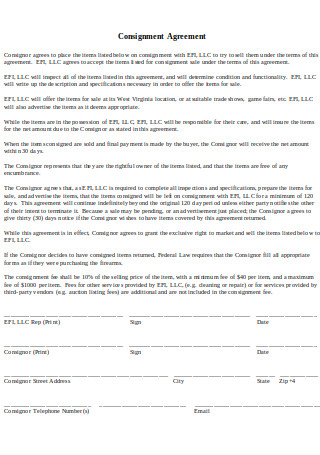
Standard Consignment Agreement
download now -
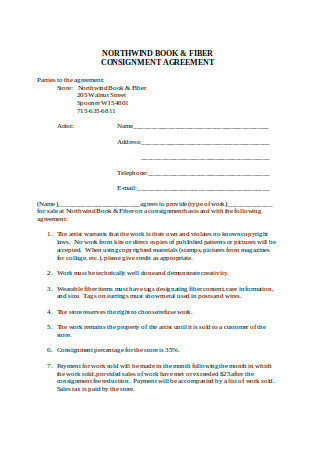
Book & Fiber Consignment Agreement
download now -
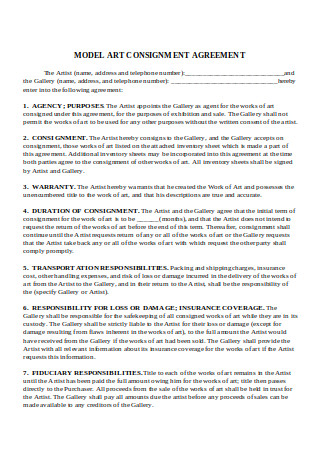
Model Art Consignment Agreement
download now -
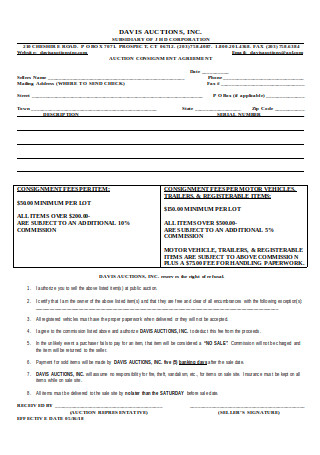
Auction Consignment Agreement
download now -
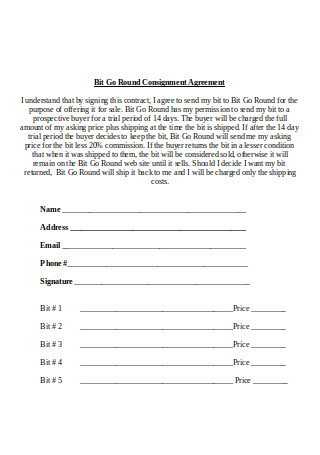
Consignment Agreement Form
download now -
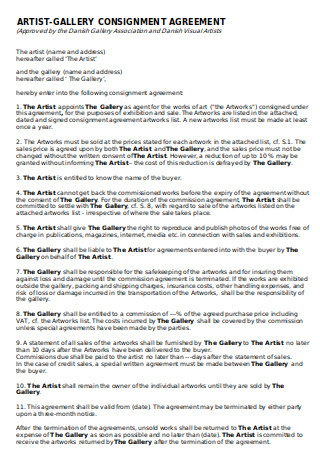
Artist-Gallery Consignment Agreement
download now -
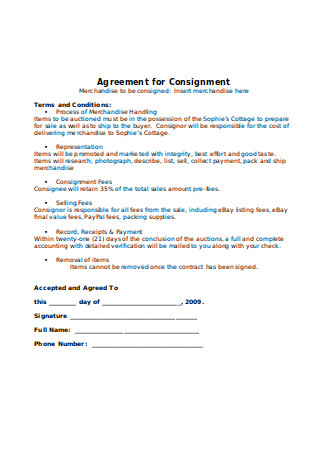
Coast Consignee Consignment Agreement
download now -
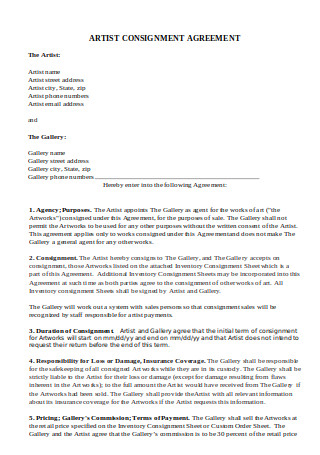
Artist Consignment Agreement
download now -
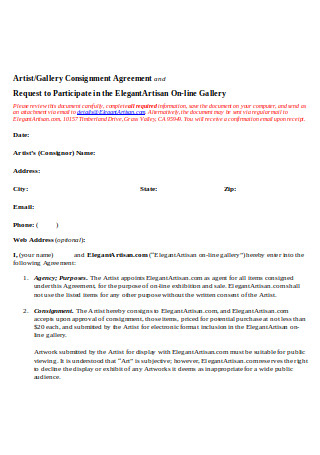
Gallery Consignment Agreement
download now -
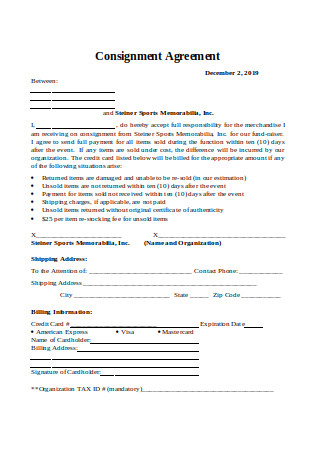
Consignment Agreement Sample
download now -
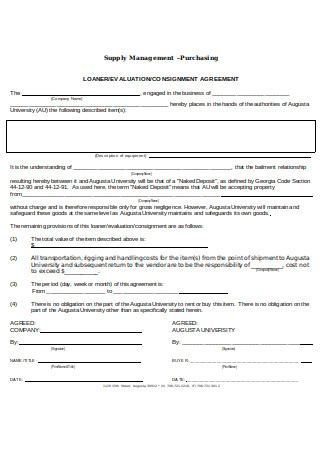
Loaner /Evaluation /Consignment Agreement
download now -
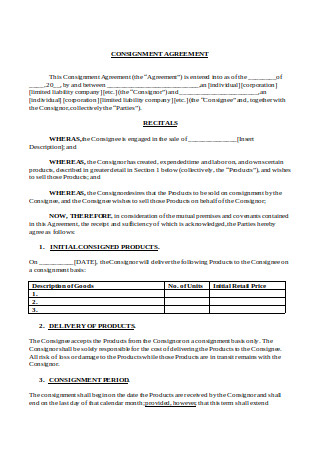
Retail Consignment Agreement
download now -
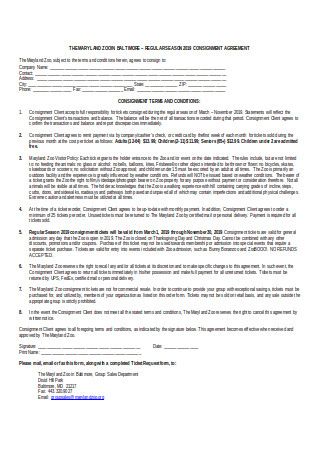
Resale Consignment Agreement
download now -
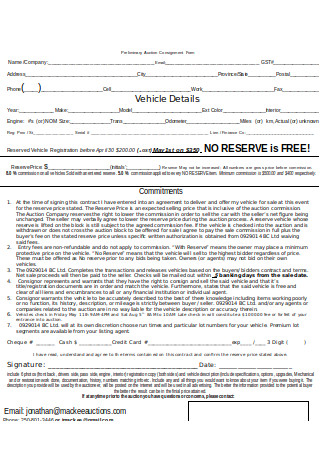
Preliminary Auction Consignment Form
download now -
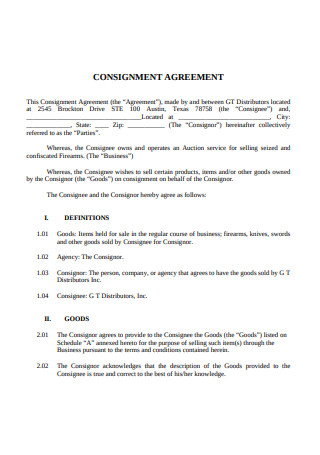
Simple Consignment Agreement
download now -
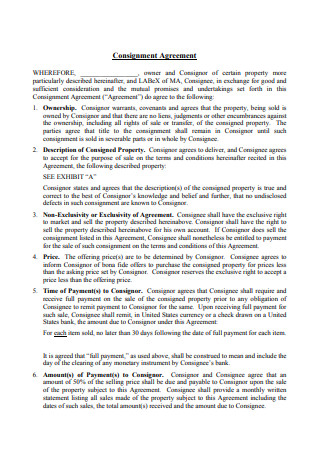
Professional Consignment Agreement
download now -
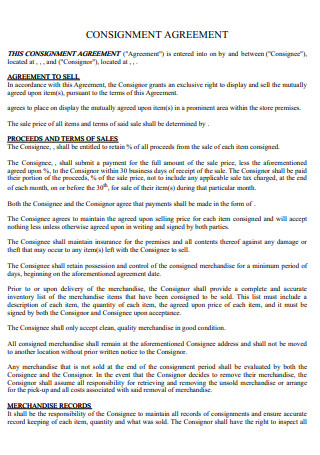
Customer Consignment Agreement
download now -
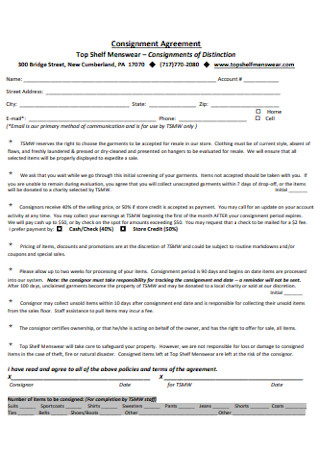
Consignment Agreement Application Form
download now -
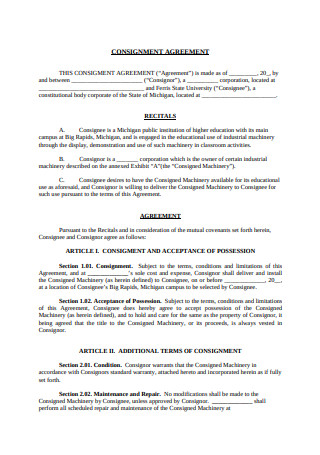
Consignment of Equipment Agreement
download now -
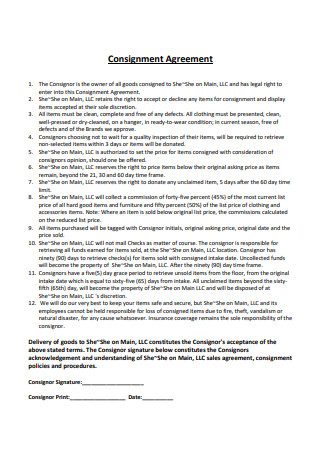
Formal Consignment Agreement
download now -
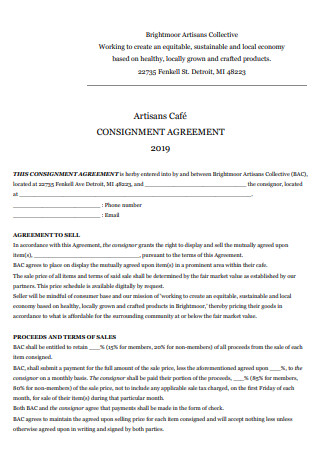
Artisans Cafe Consignment Agreement
download now -
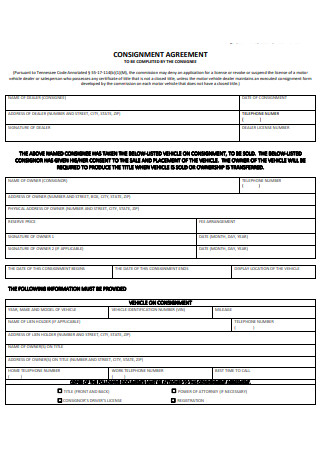
Basic Consignment Agreement Form
download now -
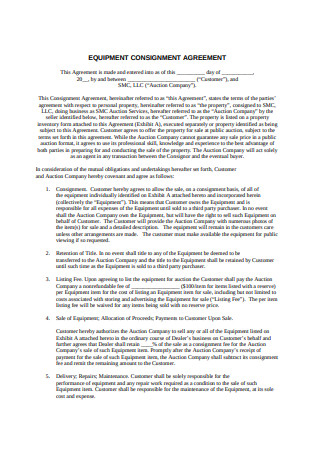
Equipment Consignment Agreement
download now -
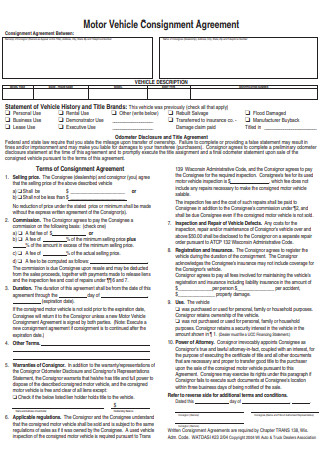
Motor Vehicle Consignment Agreement
download now -
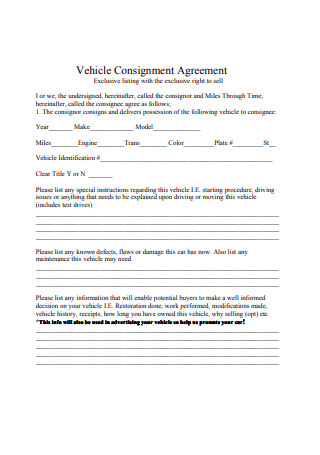
Vehicle Consignment Agreement
download now -
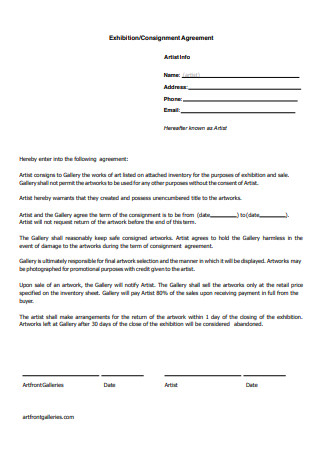
Exhibition/Consignment Agreement
download now -
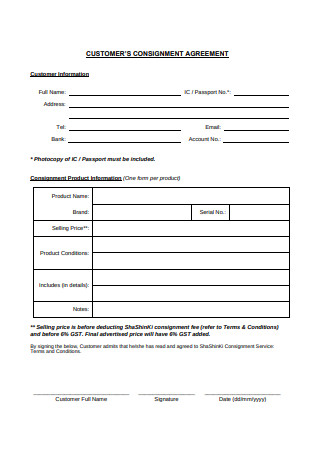
Customer’s Consignment Agreement
download now
FREE Consignment Agreement s to Download
Consignment Agreement Format
Consignment Agreement Samples
What is a Consignment Agreement?
Purposes of a Consignment Agreement
How to Make a Consignment Agreement?
FAQs
How much should the consignment rate be?
Does a consignee pay for sales tax?
What is the average income of a consignment shop owner?
Where can you best sell your products for consignment?
Do consignment stores sell used items?
What are the risks of a Consignment Agreement?
Who are the parties in a Consignment Agreement?
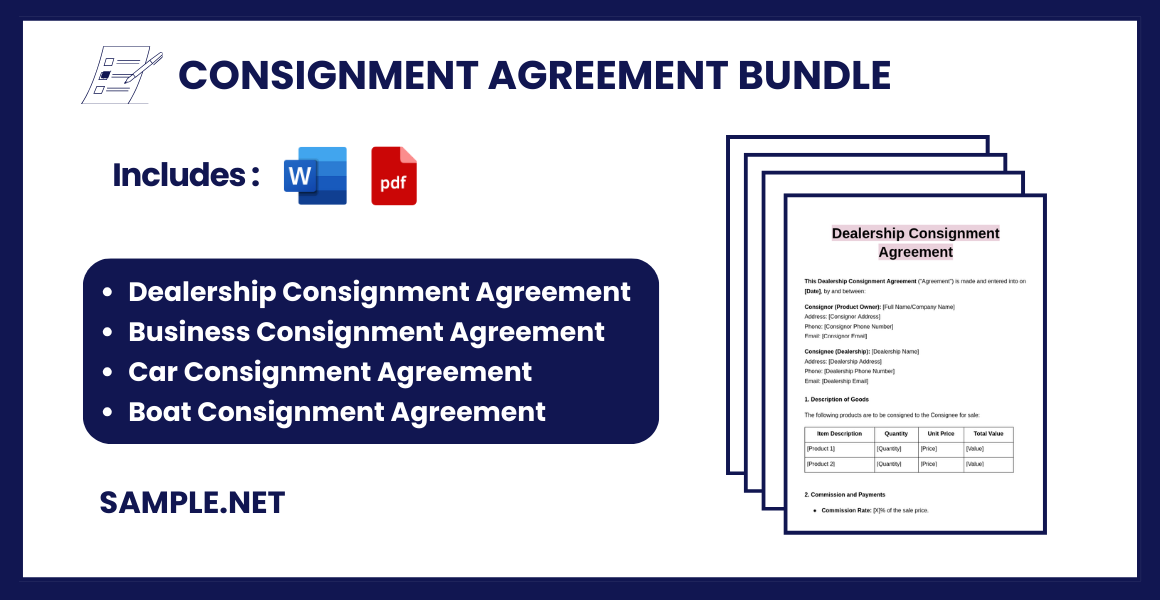
Download Consignment Agreement Bundle
Consignment Agreement Format
This Consignment Agreement (“Agreement”) is made and entered into on [Date], by and between:
Consignor: [Full Name/Company Name]
Address: [Consignor Address]
Phone: [Consignor Phone Number]
Email: [Consignor Email]
Consignee: [Full Name/Company Name]
Address: [Consignee Address]
Phone: [Consignee Phone Number]
Email: [Consignee Email]
Collectively, the Consignor and Consignee may be referred to as the “Parties.”
1. Purpose of the Agreement
The purpose of this Agreement is to set forth the terms and conditions under which the Consignor will provide certain products or goods to the Consignee for sale on a consignment basis. The ownership of the goods remains with the Consignor until the goods are sold to a third party.
2. Description of Goods
The goods to be consigned under this Agreement are as follows:
| Item Description | Quantity | Unit Price | Total Value |
|---|---|---|---|
| [Description 1] | [Quantity] | [Unit Price] | [Total Value] |
| [Description 2] | [Quantity] | [Unit Price] | [Total Value] |
| [Description 3] | [Quantity] | [Unit Price] | [Total Value] |
Additional items may be listed on an attachment to this Agreement.
3. Term of Agreement
This Agreement shall commence on [Start Date] and continue until [End Date] or until terminated in accordance with the terms of this Agreement.
4. Consignment Period
The consignment period shall last for [Number] days/weeks/months, starting from [Start Date] to [End Date], unless extended by mutual written agreement of the Parties.
5. Responsibilities of the Consignee
- Sale of Goods: The Consignee agrees to display, market, and sell the consigned goods to potential buyers in a professional and commercially reasonable manner.
- Care of Goods: The Consignee is responsible for the safekeeping and proper handling of the goods while in its possession.
- Sales Records: The Consignee shall maintain accurate records of all sales and provide a report to the Consignor at the end of each month (or other specified period).
- Payment of Proceeds: Upon the sale of the goods, the Consignee shall remit payment to the Consignor within [Number] days of the sale, deducting any fees as agreed upon.
- Return of Unsold Goods: Any unsold goods at the end of the consignment period must be returned to the Consignor at the Consignee’s expense, unless otherwise agreed in writing.
6. Responsibilities of the Consignor
- Ownership of Goods: The Consignor retains ownership of the consigned goods until they are sold to a third party.
- Delivery of Goods: The Consignor shall deliver the goods to the Consignee at the location specified by the Consignee.
- Quality of Goods: The Consignor warrants that all goods provided under this Agreement are free from defects and fit for sale.
- Right to Inspect: The Consignor reserves the right to inspect the goods at any time during the consignment period.
7. Payment Terms
- Commission Rate: The Consignee shall be entitled to a commission of [X%] of the sale price of each item sold.
- Payment Method: The Consignee shall remit payments to the Consignor via [Bank Transfer/Check/Other Payment Method].
- Timing of Payments: Payments will be made within [Number] days of each sale.
- Sales Reports: The Consignee shall provide a detailed sales report on a [Weekly/Monthly/Quarterly] basis, outlining all sales made during that period.
8. Risk of Loss
The Consignee is responsible for any loss, theft, or damage to the goods while they are under its care. If any loss, theft, or damage occurs, the Consignee shall reimburse the Consignor for the full value of the affected goods.
9. Insurance
The Consignee agrees to maintain an insurance policy that covers the full value of the consigned goods against loss, theft, or damage while in its possession.
10. Termination
This Agreement may be terminated by either Party by providing [Number] days’ written notice to the other Party. Upon termination, the Consignee must return all unsold goods to the Consignor within [Number] days.
11. Dispute Resolution
In the event of a dispute, the Parties agree to resolve the matter through [Mediation/Arbitration/Court]. The laws of [State/Country] shall govern this Agreement.
12. Confidentiality
Both Parties agree to keep the terms and conditions of this Agreement, as well as any proprietary business information shared between them, strictly confidential.
13. General Provisions
- Entire Agreement: This Agreement constitutes the entire understanding between the Parties with respect to the subject matter herein and supersedes all prior discussions, negotiations, and understandings.
- Amendments: No modification or amendment to this Agreement will be effective unless made in writing and signed by both Parties.
- Severability: If any provision of this Agreement is found to be invalid or unenforceable, the remaining provisions will continue in full force and effect.
- Assignment: Neither Party may assign or transfer its rights or obligations under this Agreement without prior written consent from the other Party.
14. Signatures
IN WITNESS WHEREOF, the Parties hereto have executed this Consignment Agreement on the dates written below.
Consignor:
Signature: __________________________
Name: [Consignor Name]
Title: [Title, if applicable]
Date: [Date]
Consignee:
Signature: __________________________
Name: [Consignee Name]
Title: [Title, if applicable]
Date: [Date]
What is a Consignment Agreement?
A Consignment Agreement is a contractual arrangement in which a consignor delivers goods to a consignee, who then sells the goods on behalf of the consignor. Unlike traditional sales, the consignee does not purchase the goods upfront but instead earns a commission or profit share when the items are sold. This agreement outlines crucial terms, including payment schedules, inventory handling, and risk allocation. It ensures transparency and protects the interests of both parties involved in the sale process.
Purposes of a Consignment Agreement
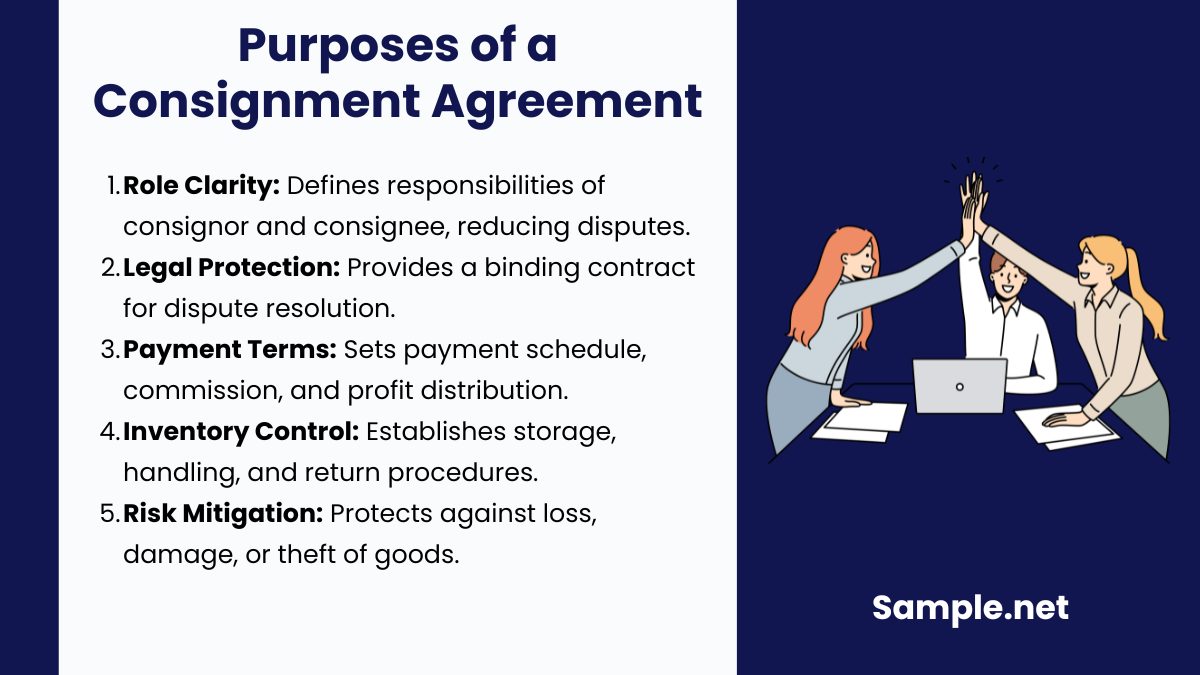
1. Clearly Defines Roles, Responsibilities, and Obligations
A consignment agreement clearly outlines the roles and responsibilities of both the consignor (owner of the goods) and the consignee (seller). It defines who is responsible for tasks such as inventory management, marketing, and sales. By having a clear understanding of each party’s obligations, there is less risk of miscommunication, misunderstandings, or disputes during the consignment process.
2. Provides Legal Protection for Both Parties
The consignment agreement serves as a legally binding document that protects both the consignor and consignee. In case of disagreements, theft, damage, or payment delays, the agreement can be used as evidence in legal proceedings. It ensures that all aspects, including payment terms, liability for damaged goods, and the process for returning unsold inventory, are clearly defined. You can also see more on Sales Contracts.
3. Establishes Payment Structure and Commission Rates
The consignment agreement specifies how and when the consignee will pay the consignor for the goods sold. It clearly defines the percentage of commission, payment frequency, and method of payment. This ensures that both parties are aware of the financial aspects of the relationship, reducing the likelihood of conflicts regarding payments, sales reports, or profit distribution.
4. Sets Guidelines for Inventory Management and Handling
The agreement includes rules on how the consignee should manage and handle the goods while in their possession. It defines where and how the goods should be stored, how inventory will be tracked, and the process for inspecting and returning unsold goods. This ensures the consignor retains control over their products and prevents mismanagement or damage while the consignee is in possession of the items.
5. Protects Against Risks of Loss, Damage, or Theft
Consignment agreements outline how to handle risks related to the loss, damage, or theft of goods while under the consignee’s control. The agreement may require the consignee to provide insurance for the goods or assume liability for any losses. This risk allocation reduces the financial exposure of the consignor and encourages the consignee to take greater responsibility for the proper care and storage of the products. You can also see more on Vendor Contract.
How to Make a Consignment Agreement?
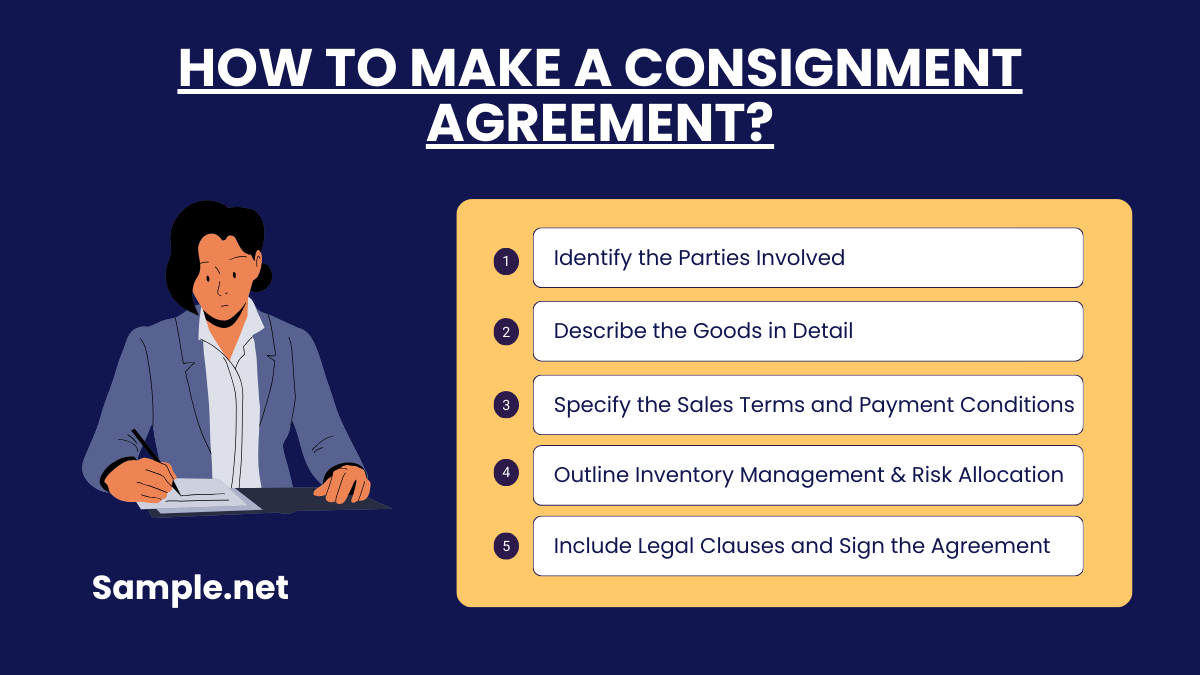
1. Identify the Parties Involved
Start by clearly identifying the two main parties involved: the consignor (owner of the goods) and the consignee (seller of the goods). Include the full legal names, addresses, and contact information of both parties. This ensures transparency and accountability if legal action is ever required. It’s important to clarify the roles of each party and their relationship in the transaction.
2. Describe the Goods in Detail
Provide a comprehensive description of the goods being consigned. This should include the product names, quantities, unique identifiers (like serial numbers, SKU, or batch numbers), product conditions, and estimated value. This section serves as an inventory list, ensuring that both parties have a clear understanding of the items being consigned. This part of the agreement protects against future disputes regarding the goods.
3. Specify the Sales Terms and Payment Conditions
Define how sales will be managed, including payment structure and deadlines. Clarify the commission rate, percentage of sales to be paid to the consignee, payment schedule (weekly, monthly, or per sale), and how payments will be made (bank transfer, check, or other methods). This section should also specify how refunds, returns, and discounts will be handled and who will bear the cost. You can also see more on Artist Agreements.
4. Outline the Inventory Management and Risk Allocation
Address how the consignee will store, manage, and protect the goods while they remain in their possession. Define who is responsible for theft, loss, or damage to the goods. The agreement should clearly state whether the consignee is liable for any losses while the goods are in their custody. If insurance coverage is required, this section should clarify which party is responsible for obtaining the insurance policy.
5. Include Legal Clauses and Sign the Agreement
Add key legal clauses to safeguard both parties. These clauses should include:
- Dispute Resolution: How disputes will be resolved (arbitration, mediation, or litigation).
- Contract Termination: The conditions under which the agreement can be terminated by either party.
- Governing Law: Which jurisdiction’s laws will govern the agreement in case of disputes.
- Force Majeure Clause: Protection from liability for unforeseen events like natural disasters.
A consignment agreement fosters mutual trust and transparency between the consignor and consignee. By clearly defining roles, terms, and payment conditions, it reduces risks and boosts profitability. This legal arrangement is essential for businesses seeking a flexible and effective approach to managing sales, inventory, and revenue sharing. You can also see more on Auto Contracts.
FAQs
How much should the consignment rate be?
Consignment rates may differ from store to store, but the usual split is 60% for the consignor and 40% for the consignee. Though this is the common practice, you can negotiate and agree with a consignee for a 70/30 split. However, some stores may also ask for a 50/50 split. Therefore, it depends on how a consignor negotiates with a consignee to his/her advantage.
Does a consignee pay for sales tax?
It is the consignment store’s primary duty to sell the items of the consignor, but they are not accountable for any sales tax since they do not buy the products they sell under consignment. Consignment shops receive commissions as their income, so when a product sells, the shop keeps a specific percentage and gives the rest to the seller. Therefore, the shop will only report his part of the sale in his/her taxes. You can also see more on Bailment Agreement.
What is the average income of a consignment shop owner?
According to Simply Hired, the average income of a consignment shop owner is $42,000. But this estimation may vary from place to place, depending on the location of a store. The Bureau of Labor Statistics reported that the earning of a retail clothing manager is about $30 per hour.
Where can you best sell your products for consignment?
The following are some stores where you could best sell your products for consignment: (1) Poshmark is a fast-growing company widely known in the U.S. for selling products online, specifically accessories and clothing. (2) eBay is practical if you want to sell your clothing items outside the country, but you have to learn how to compete with other sellers on the platform. (3) Tradesy is known to be one of the greatest competitors in the consignment world. They sell clothing, shoes, bags, pieces of jewelry, and more. (4) Plato’s Closet is distinct from the other consignment shops because they pay for your items immediately. They have many stores all over Canada and the U.S. (5) The RealReal pays a maximum of 85% of your product’s under consignment, and they have stores in about 20 big cities. You can also see more on Vehicle Sale Agreement.
Do consignment stores sell used items?
Yes, some consignment stores accept gently used items that are resaleable, but remember that these stores only pay until your items sell. Make sure the items you sell look as good as new as much as possible. If you want to sell clothes, then check the zippers, buttons, and even the presence of stains. Sell presentable items.
What are the risks of a Consignment Agreement?
The main risks are for the consignor, as they still own the goods until they are sold. If the consignee fails to protect, sell, or return the goods, the consignor may face financial losses. To minimize this risk, liability clauses should be included in the contract.
Who are the parties in a Consignment Agreement?
The two main parties are the consignor (owner of the goods) and the consignee (seller of the goods). Both parties must agree on terms related to sales, payments, and inventory. You can also see more on Sales Agreement.
